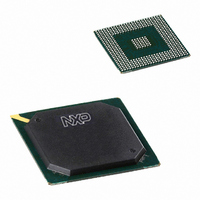PNX1501E,557 NXP Semiconductors, PNX1501E,557 Datasheet - Page 283

PNX1501E,557
Manufacturer Part Number
PNX1501E,557
Description
IC MEDIA PROC 266MHZ 456-BGA
Manufacturer
NXP Semiconductors
Datasheet
1.PNX1502EG557.pdf
(828 pages)
Specifications of PNX1501E,557
Applications
Multimedia
Core Processor
TriMedia
Controller Series
Nexperia
Interface
I²C, 2-Wire Serial
Number Of I /o
61
Voltage - Supply
1.14 V ~ 1.26 V
Operating Temperature
0°C ~ 85°C
Mounting Type
Surface Mount
Package / Case
456-BGA
Lead Free Status / RoHS Status
Lead free / RoHS Compliant
Program Memory Type
-
Ram Size
-
Other names
935274728557
PNX1501E
PNX1501E
PNX1501E
PNX1501E
Available stocks
Company
Part Number
Manufacturer
Quantity
Price
Company:
Part Number:
PNX1501E,557
Manufacturer:
NXP Semiconductors
Quantity:
10 000
- Current page: 283 of 828
- Download datasheet (8Mb)
Philips Semiconductors
Volume 1 of 1
PNX15XX_SER_3
Product data sheet
Several FIFOs Enabled
There is one DMA read channel and one DMA write channel available for the 4 FIFO
queues. Each FIFO queue only makes 64 byte DMA requests to one of the channels.
The bandwidth allocated by the central arbiter is done separately for the read channel
and for the write channel. The 4 FIFOs compete to access to the same DMA channel.
The arbitration between the 4 FIFOs is a priority encoded scheme. Every time there
is a slot available in the DMA channel the local arbiter looks for the request coming
from the 4 FIFOs in the order 0, 1, 2, and 3. There is up to 3 slots available in the
DMA channel. Each FIFO does ping-pong requests, i.e. a FIFO cannot have two
pending requests.
If the total system bandwidth available for the 4 FIFO queues in DMA read or DMA
write is 64 bytes per 40 s and if all FIFOs are in read mode or write mode then each
FIFO gets one 64-byte request per 4 times 40 s. If 2 FIFOs are in read mode and
the other two in write mode and, at system level, the read DMA channel can get one
64-byte request per 40 s and the write DMA channel can also get one 64-byte
request per 40 s, then each FIFO can get one 64-byte request per 2x40 s.
So, in this situation the monitored/generated signal frequencies that can be tolerated
are:
Remark: The following sampling calculations assume 1-bit sampling (EN_IO_SEL =
00 or 11).
Timestamping: 1 edge -> 32 bits
=> 16 edges = 64 bytes of data
=> 16 edges can occur every 2x40 s
=> 1 edge can occur every 5 s = 200 kHz maximum frequency.
Sampling: 1 edge -> 1 bit
=> 512 edges = 64 bytes of data
=> 512 edges can occur every 2x40 s
=> 1 edge can occur every 156.25 ns = 6.4 MHz maximum frequency.
Similar calculations for frequency tolerances can be made for 2 or 3 queues
requesting DMA in the same direction and at the same time and for queues which
use multi-bit sampling, i.e. EN_IO_SEL set to binary code 01 or 10.
Remark: The computation can be made to answer a different question: if the signal
to sample is running at 12 MHz, then a sampling frequency of more than 24 MHz is
required then what is the minimum latency requirement for my system memory?
Similarly, if several FIFOs are operating simultaneously with different operating
frequencies (to sample different types of signals) then the different FIFOs will get
different maximum operating frequencies because of the local arbitration.
Rev. 3 — 17 March 2006
Chapter 8: General Purpose Input Output Pins
© Koninklijke Philips Electronics N.V. 2006. All rights reserved.
PNX15xx Series
8-16
Related parts for PNX1501E,557
Image
Part Number
Description
Manufacturer
Datasheet
Request
R
Part Number:
Description:
Manufacturer:
NXP Semiconductors
Datasheet:
Part Number:
Description:
Digital Signal Processors & Controllers (DSP, DSC) MEDIA PROCESSOR PNX15XX/266MHZ
Manufacturer:
NXP Semiconductors
Datasheet:

Part Number:
Description:
IC MEDIA PROC 266MHZ 456-BGA
Manufacturer:
NXP Semiconductors
Datasheet:
Part Number:
Description:
NXP Semiconductors designed the LPC2420/2460 microcontroller around a 16-bit/32-bitARM7TDMI-S CPU core with real-time debug interfaces that include both JTAG andembedded trace
Manufacturer:
NXP Semiconductors
Datasheet:

Part Number:
Description:
NXP Semiconductors designed the LPC2458 microcontroller around a 16-bit/32-bitARM7TDMI-S CPU core with real-time debug interfaces that include both JTAG andembedded trace
Manufacturer:
NXP Semiconductors
Datasheet:
Part Number:
Description:
NXP Semiconductors designed the LPC2468 microcontroller around a 16-bit/32-bitARM7TDMI-S CPU core with real-time debug interfaces that include both JTAG andembedded trace
Manufacturer:
NXP Semiconductors
Datasheet:
Part Number:
Description:
NXP Semiconductors designed the LPC2470 microcontroller, powered by theARM7TDMI-S core, to be a highly integrated microcontroller for a wide range ofapplications that require advanced communications and high quality graphic displays
Manufacturer:
NXP Semiconductors
Datasheet:
Part Number:
Description:
NXP Semiconductors designed the LPC2478 microcontroller, powered by theARM7TDMI-S core, to be a highly integrated microcontroller for a wide range ofapplications that require advanced communications and high quality graphic displays
Manufacturer:
NXP Semiconductors
Datasheet:
Part Number:
Description:
The Philips Semiconductors XA (eXtended Architecture) family of 16-bit single-chip microcontrollers is powerful enough to easily handle the requirements of high performance embedded applications, yet inexpensive enough to compete in the market for hi
Manufacturer:
NXP Semiconductors
Datasheet:

Part Number:
Description:
The Philips Semiconductors XA (eXtended Architecture) family of 16-bit single-chip microcontrollers is powerful enough to easily handle the requirements of high performance embedded applications, yet inexpensive enough to compete in the market for hi
Manufacturer:
NXP Semiconductors
Datasheet:
Part Number:
Description:
The XA-S3 device is a member of Philips Semiconductors? XA(eXtended Architecture) family of high performance 16-bitsingle-chip microcontrollers
Manufacturer:
NXP Semiconductors
Datasheet:

Part Number:
Description:
The NXP BlueStreak LH75401/LH75411 family consists of two low-cost 16/32-bit System-on-Chip (SoC) devices
Manufacturer:
NXP Semiconductors
Datasheet:

Part Number:
Description:
The NXP LPC3130/3131 combine an 180 MHz ARM926EJ-S CPU core, high-speed USB2
Manufacturer:
NXP Semiconductors
Datasheet:

Part Number:
Description:
The NXP LPC3141 combine a 270 MHz ARM926EJ-S CPU core, High-speed USB 2
Manufacturer:
NXP Semiconductors

Part Number:
Description:
The NXP LPC3143 combine a 270 MHz ARM926EJ-S CPU core, High-speed USB 2
Manufacturer:
NXP Semiconductors











